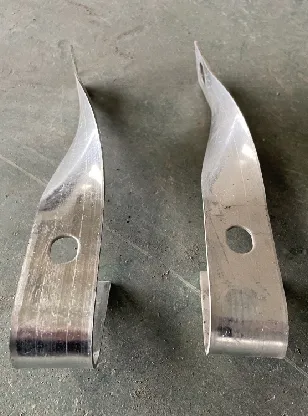loading...
- No. 9, Xingyuan South Street, Dongwaihuan Road, Zaoqiang County, Hengshui, Hebei, China
- admin@zjcomposites.com
- +86 15097380338
- Welcome to visit our website!
Durable Fiber Reinforced Plastic Tanks and Vessels for Various Industrial Applications
Fiber Reinforced Plastic Tanks and Vessels Advancements and Applications
In modern industrial applications, the demand for durable, lightweight, and corrosion-resistant materials has driven the development of Fiber Reinforced Plastic (FRP) tanks and vessels. FRP is a composite material that combines a plastic matrix with reinforcing fibers, typically made from glass, carbon, or aramid. This innovative material has transformed numerous industries, ranging from chemical processing to water treatment, due to its outstanding mechanical properties and versatility.
Properties and Advantages of FRP
One of the key advantages of FRP is its exceptional strength-to-weight ratio. Compared to traditional materials like steel or concrete, FRP tanks are significantly lighter, which not only simplifies transportation and installation but also reduces the load on supporting structures. This characteristic is particularly beneficial for applications where weight is a critical factor, such as in aerospace or offshore platforms.
Additionally, FRP exhibits excellent resistance to corrosion and chemical exposure. Unlike metal tanks, which can corrode over time when in contact with aggressive chemicals, FRP tanks are designed to withstand harsh environments, making them ideal for industries dealing with corrosive substances, such as chemical manufacturing, wastewater treatment, and food processing. The longevity of FRP not only lowers maintenance costs but also minimizes the environmental impact associated with the disposal of corroded materials.
Furthermore, FRP tanks can be customized to meet specific requirements. Manufacturers can tailor the type of fibers, resin, and layering techniques to produce tanks with varying strengths, flexibility, and resistance attributes. This tailoring allows engineers to design storage solutions that are optimized for unique operational conditions, whether it be extreme temperatures, pressures, or specific chemical exposures.
Applications of FRP Tanks and Vessels
fibre reinforced plastic tanks and vessels

The applications of FRP tanks and vessels are vast and varied. In the chemical industry, they are widely used for the storage of acids, bases, and other corrosive substances. Their ability to resist chemical attack extends the lifespan of the storage solutions and ensures a safer working environment.
In the water and wastewater treatment sector, FRP tanks are employed for various processes, including aeration, clarification, and biosolid storage. Their lightweight nature allows for easy installation and relocation, which is particularly advantageous in modular treatment plants. Moreover, FRP's resistance to corrosion is critical in this environment, as traditional materials would deteriorate rapidly in contact with wastewater.
The food and beverage industry has also recognized the benefits of FRP. Tanks used for the storage of liquids such as oils, juices, and other food products leverage FRP's cleanability and resistance to bacterial contamination, ensuring food safety and prolonging shelf life. Regulatory compliance in these industries often requires materials that do not react with stored products, making FRP an ideal choice.
Challenges and Future Directions
Despite their many benefits, the adoption of FRP tanks has some challenges. The initial cost of FRP materials can be higher than that of conventional materials, which may deter some industries from making the switch. Additionally, the manufacturing process can be more complex, requiring skilled labor and specialized equipment.
However, ongoing advancements in composite manufacturing techniques, such as automated fiber placement and advancements in resin formulations, are likely to enhance the performance and cost-effectiveness of FRP products. As industries continue to prioritize sustainability and efficiency, the demand for innovative storage solutions like FRP tanks is expected to grow.
In conclusion, Fiber Reinforced Plastic tanks and vessels represent a significant leap forward in storage technology. Their unique properties, including lightweight design, corrosion resistance, and adaptability, position them as essential components across multiple industries. As research and development continue to evolve, FRP is set to play an increasingly pivotal role in meeting the challenges of modern industrial applications, paving the way for safer and more efficient operations.
-
The Rise of FRP Profiles: Strong, Lightweight, and Built to LastNewsJul.14,2025
-
SMC Panel Tanks: A Modern Water Storage Solution for All EnvironmentsNewsJul.14,2025
-
GRP Grating: A Modern Solution for Safe and Durable Access SystemsNewsJul.14,2025
-
Galvanized Steel Water Tanks: Durable, Reliable, and Ready for UseNewsJul.14,2025
-
FRP Mini Mesh Grating: The Safer, Smarter Flooring SolutionNewsJul.14,2025
-
Exploring FRP Vessels: Durable Solutions for Modern Fluid HandlingNewsJul.14,2025
-
GRP Structures: The Future of Lightweight, High-Performance EngineeringNewsJun.20,2025
